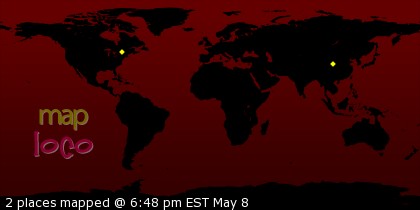In his wonderful screenwriting book Which Lie Did I Tell?: More Adventures in the Screen Trade, William Goldman spends more than a little bit of time talking about Late Entry, by which he means starting the camera as late as possible in any given scene. This, like much of the advice in Goldman's two books on screenwriting–the other is Adventures in the Screen Trade–is absolutely dead on for novels and short stories as well.
Every scene in a story has a beginning and an end. It starts when a character comes into the setting and ends when they leave. This can be made more complex by the fact that most scenes have multiple characters that may or may not enter and leave all at the same time, but is at root the basic structure of scene. But not every scene does or should appear in the story from beginning to end.
A simple example for why this is true might go like this: Character A enters a room. They then spend forty minutes peacefully reading a magazine before character B comes along and starts a dialogue. Several minutes might then go into them exchanging pleasantries about their extended family before a troublesome memory of A doing something stupid at B's wedding comes up. A fight ensues and eventually B pulls out a gun and shoots A dead, then flees the scene.
In a movie, with it's limited time budget, it is obvious why most if not all of the waiting and initial family discussion will not and should not end up being filmed. It's boring and it wastes half of the two hours you have to tell the entire story. The question is where exactly do you start the camera rolling? The answer is and should always be as late as possible for the scene to make sense and show the audience what they need to see. Depending on the story, you might put in snippets of the wait and pleasantries or you might not. You will almost certainly put in parts of the argument (though those might be better brought it in flashback) and you must put in the shooting.
The question of when to leave a scene is a mirror of the Late Entry principle. How soon can you get out while still giving the audience what they need? The answer is: As soon as possible. And the same principle applies to writing a novel or short story. Any part of a scene that doesn't cover something the reader needs to know about should go.
Thoughts? Comments? Questions?
Wednesday, October 10, 2007
Subscribe to:
Post Comments (Atom)





7 comments:
Yah, good advice. I really like Raymond Obstfeld's book on writing scenes (I think that's the spelling). He talks about how to find the "hot spot" (the conflict at the heart of the scene) and building the scene around that - techniques for backing into the place where you enter late and leave early.
-CJD
"Late entry," I like that. Sometimes when I'm stuck on a scene or the start of a short story I write "the next scene," not the "first" one. Often, "next" becomes "first."
I write "the next scene," not the "first" one. Often, "next" becomes "first."
I write that way. I learned the hard way that "out of order" can be a very good thing! Besides, piecing the pieces together at the end is FUN!
I learned the hard way that "out of order" can be a very good thing!
I've always been a linear writer. However, the current effort is coming at me in bits and pieces, largely at the beginning and end. I am thinking of play with the ends and seeing what comes together in the middle as a result. Or not. We'll see. :)
CJD, I'll have to look for the Obstfeld at some point. I'm slowly collecting books on craft--for every one that I like parts of I find ten that are unreadable or that irritate me.
X, hi (waves). Interesting way to approach it. Sounds like it might act as one of the tricking yourself to get things done techniques that I've heard both Tim Powers and Lyda talk about.
Mari, Doug, "out of order" (shudders). Every single time I've written a scene out of order and then gone back to bridge the stuff between the last scene and the new one it's been ten times the work. I know it's a great technique for some folks and any thing that works is the right thing to do but for me it's black magic.
Of course, when writing NaNoWriMo novels, you start as far away as possible so you have more word padding...
I've heard this before, and it is really good advice. I was having trouble figuring out how to start a short story and someone mentioned this little tidbit. It helped me write a short story, instead of a long-winded history.
Off topic, but I just read Cybermancy, and I was thoroughly pleased. Good work, Kelly! Looking forward to No. 3.
Calenhíril,
Thanks! Glad you enjoyed it. I just sent the copyedited manuscript of CodeSpell back to Ace, so it's all over but the galleys and actual printing.
Post a Comment